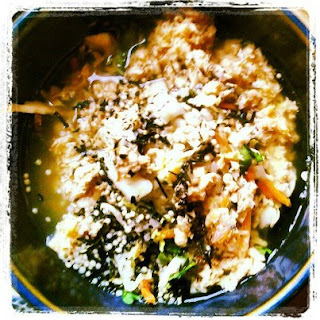I'm happy to say that I finally feel a chill in the air -- chai season has begun.
Here at Teaism, unlike some global tea & coffee chains who will not be named, our
chai (pictured below) is made from scratch and is prepared the traditional Indian way – we cook
it in a big pot on the stove. It is a blend of organic ingredients –
black tea, cinnamon, black and green cardamom, cloves, ginger, and star anise. A company in Wisconsin blends and
grinds the tea and spices according to our own special recipe and we get fresh shipments every week.
Teaism Chai
According to an article entitled “A LONG WAY HOME: The Chai of Old Enters a New Market” by Michelle D. Williams, Fresh Cup Magazine, 2005:
“It is often sold on street corners and at train stations by “chaiwallas,” in India, Nepal, Tibet, and Pakistan, where people grab a terra cotta cupful, drink it standing, then toss the cup into a pile on the ground. People have been consuming it this way for centuries as a daily digestive aid.”The spicy beverage made its way Stateside in the 60s, after natural foods purists and others returned from travels to the Himalayas where they were introduced to the radical idea of spiced tea with milk. Williams explains that for many, “the very word 'chai,' the worldly spices and exotic tea, all conjure a romantic images of travel, something we crave in the midst of modern life.” Perhaps this explains the explosive popularity of chai in recent years, moving beyond the sphere of hot drinks and into milkshakes, candles, ice-cream and beyond.
A steaming mug of fresh Chai




















